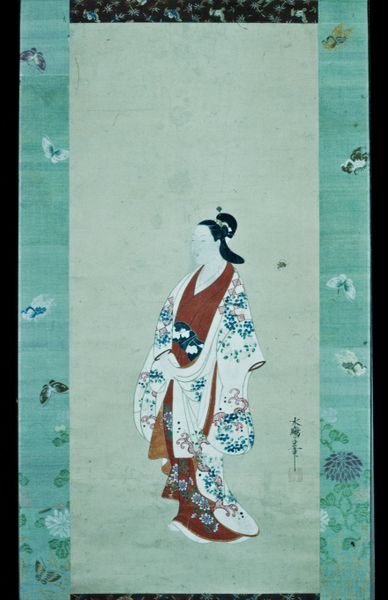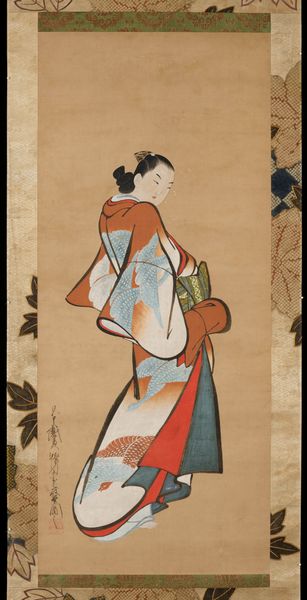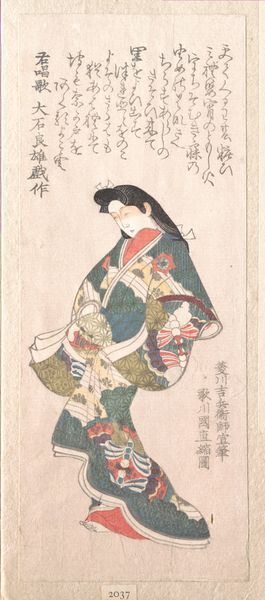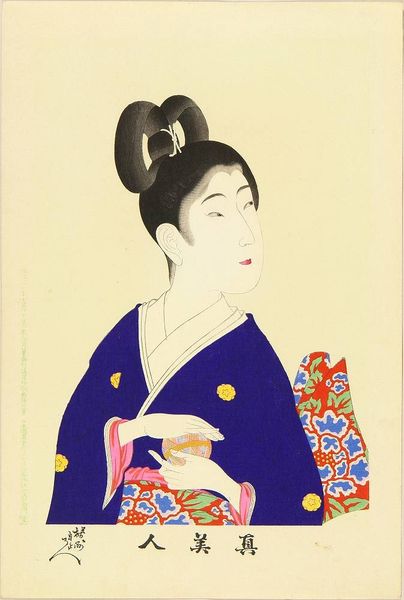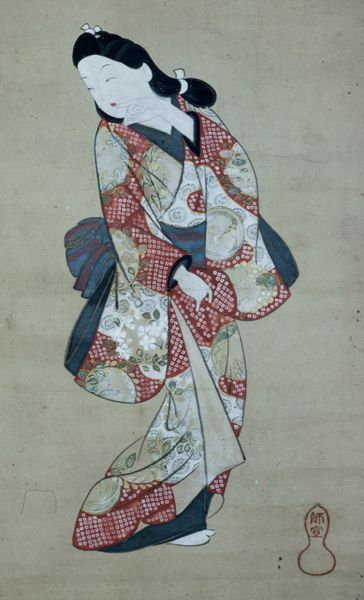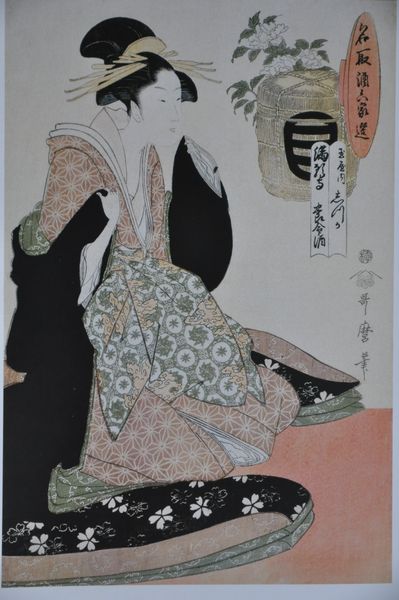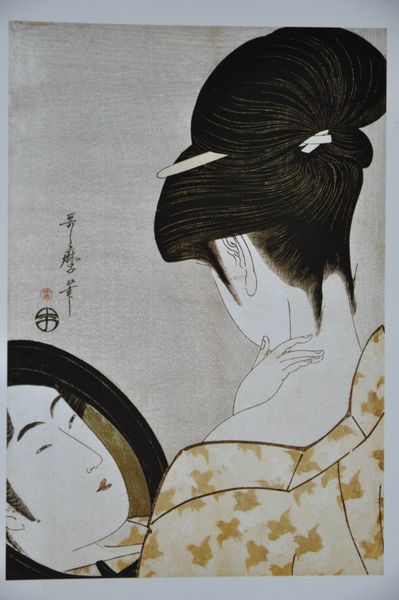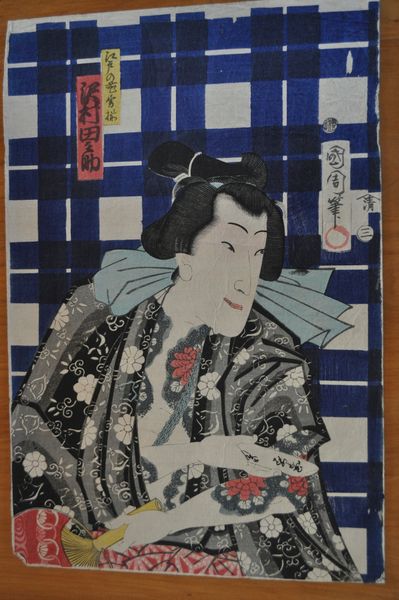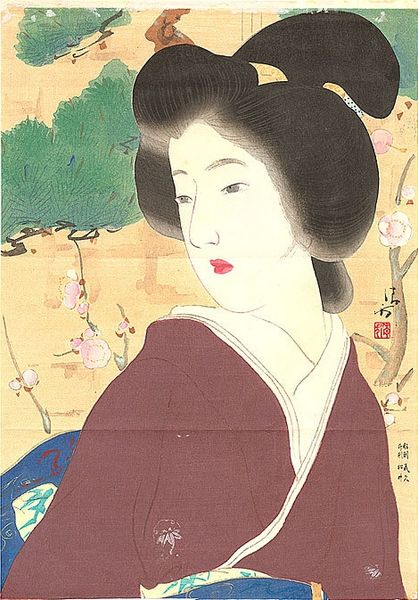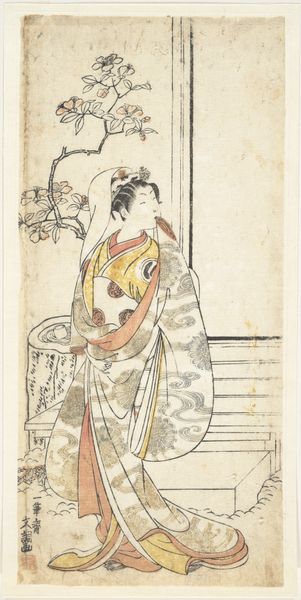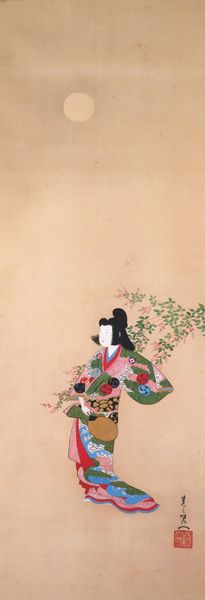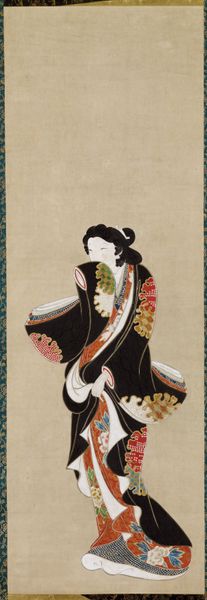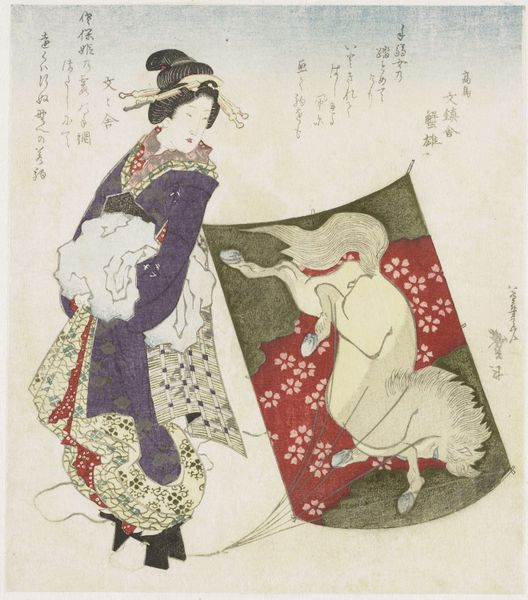
drawing, painting, paper, hanging-scroll, ink
#
drawing
#
painting
#
ukiyo-e
#
japan
#
paper
#
hanging-scroll
#
ink
#
genre-painting
#
erotic-art
Dimensions: 46 7/8 x 20 7/8 in. (119 x 53 cm) (image)80 11/16 x 25 3/8 in. (205 x 64.5 cm) (mount) w 71 cm w/roller
Copyright: Public Domain
Editor: This is "Standing Prostitute in White Kimono," an 18th-century hanging scroll by Miyagawa Choshun. The figure dominates the composition, but what strikes me most is the delicate balance between the stark white kimono and the pops of color. What do you see in this piece? Curator: Formally, the work hinges on a play between line and surface. Notice the economical use of ink to define the figure’s contour. The white of the kimono, then, functions less as color and more as a ground, against which the details of the garment – the patterned fabric, the vermillion lining – truly sing. The flatness inherent to the Ukiyo-e style is critical here. Does it invite the viewer to contemplate a depth of perspective or meaning? Editor: I can see that, especially the flatness emphasizing the patterning on the kimono. But what about the negative space? Is it just background? Curator: It certainly fulfills that function, providing a neutral field. However, it's more than just an absence. The expanse of untouched paper amplifies the presence of the figure, intensifying our focus on the lines and forms created. We must consider it as an active component of the overall composition. It's another surface that provides meaning and context to the figure itself. Editor: That's interesting; I never thought of negative space that way. I focused only on the painted details. Curator: That’s the essence of formalist study. We seek understanding in the observable—the shapes, lines, and relationships within the work itself. Editor: Well, this piece offers a lot to observe if you look at it from that perspective. Curator: Precisely. A painting's essence resides not just in the subject matter but also the way the artist manipulated form and surface to construct meaning. Editor: Thanks, that makes me want to revisit the artwork!
Comments
No comments
Be the first to comment and join the conversation on the ultimate creative platform.
